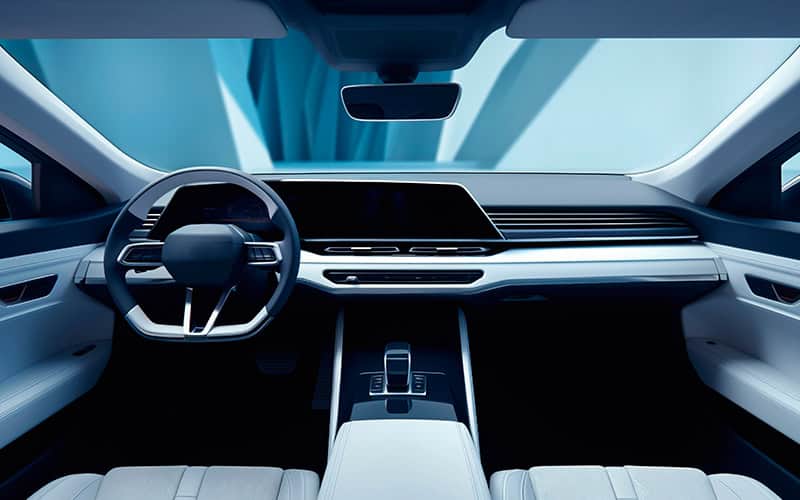Electric vehicles (EVs) are cementing their position as a green alternative to gas cars. As they continue to become the most preferred vehicles, automakers fully shifting to all-electric vehicle production is on the horizon. You might see fewer gas vehicles come 2035 since automakers will only make EVs then.
As more automakers look forward to joining the EV industry, you are already presented with a few great EV brands and models. One brand that’s really popular with people is Tesla. Tesla cars hold a firm ground in the EV market. You can’t look for the best EVs without coming across the Tesla brand. But why is it the most popular brand, and how does it compare to other electric cars?
Read on as this post explores Tesla’s innovations that put it ahead of the competition. You’ll also learn how its innovations differ from other EVs’ innovations, among a few more things.
Tesla’s Innovations
There’s no denying that Tesla is a major player in the EV industry. It pushes the boundaries of EVs with groundbreaking innovations revealing the capabilities of electric vehicles. Tesla performs incredibly well because of these innovations:
Battery Technology
Tesla cars have one of the best battery technologies in the EV industry. Other electric vehicles use modular-based lithium-ion battery configurations. Not only do these configurations add unnecessary weight, but they also take up more space without packing more energy.
On the other hand, Tesla uses the next-gen battery configuration. The new Cell-to-Pack lithium-ion battery design integrates each battery cell into the pack, saving space and increasing the volume for more energy storage. Since Tesla cars use this new battery design, they have a better range because their batteries have the best energy density.
What’s more, Tesla goes to great lengths to make their batteries operate under optimal temperatures. The company equips its fleet of electric vehicles with advanced liquid cooling systems to dump heat generated by the battery packs.

Autopilot
Tesla also leads other electric vehicles with its suit of Advanced Driver-Assistance Systems (ADAS). Tesla cars rely on multiple driver-assist technologies to make Autopilot more efficient. The cameras are the main features of Autopilot; they monitor the vehicle’s surroundings and see obstacles such as pedestrians and other cars.
Radar sensors send out radio waves that bounce off obstacles such as other cars, allowing Tesla cars to know how far another vehicle is to avoid collision. In addition to radar, Tesla cars use ultrasonic sensors to send out sound waves and use echoes to estimate how far another car might be; this also helps the car avoid hitting obstacles.
More importantly, Tesla cars feature traffic-aware cruise control (TACC). This feature allows Tesla cars to maintain some distance from the vehicle ahead when cruising on a highway. If the next lane is clear and the vehicle deems it safe to change lanes, the Autopilot initiates the Auto Lane Change feature.
Comparison of Tesla and Other Electric Vehicles
Tesla has one of the best lithium-ion battery configurations. Its batteries are one of the most powerful because they store more energy than any other EV battery. As a result, Tesla cars differ from other cars in performance, price, and position in the EV market.
Performance
If you want a well-performing electric vehicle, you’ll consider a few things from the car you intend to buy. Whether it’s Tesla or other electric vehicles you want to buy, you’ll consider:
Driving Range
Tesla vehicles have some of the best lithium-ion battery configurations. Their batteries have the highest energy density because each battery cell integrated into the pack increases volume for more energy storage. Tesla vehicles can carry enough energy in their batteries to cover over 300 miles.
Other electric vehicles don’t have a comparable range because of their lithium-ion battery technology. The modular-based lithium cell configurations of other EVs rely on two thermal interface materials (TIMs) to maintain optimal battery temperature. However, these materials only add weight to the battery pack and consume more volume, reducing the battery pack’s power output. As a result, other EVs don’t travel as far as Tesla cars because of reduced energy density.
Charging Speed
Charging a Tesla EV is pretty fast because Tesla has built fast superchargers for its models. The superchargers churn out an impressive 250kW of power capable of charging your Tesla EV to 100% in less than 90 minutes! If you plug a supercharger into your Tesla just for 15 minutes, you’ll add up to 200 miles charge of range.
Other EVs rely on standard public charging stations to boost their battery power. These chargers don’t put out as much power as superchargers. Instead, they put out 3 – 22kW of energy, charging your EV over 3 hours.
Technology Advancement
Tesla cars are more advanced technologically than other electric vehicles (EVs). Tesla cars have autopilot driver-assist features that improve their safety. The driver-assist can adjust the vehicle’s speed to match the speed of the vehicle ahead. Also, the driver-assist can change lanes or prevent you from changing lanes if the vehicle deems it not safe.
The interior design also has technological advancements. You’ll often find large touchscreens in a Tesla that control vehicle functions such as climate control, maps, and navigation. However, Tesla EVs don’t have more cabin space because they prioritize minimalist design and sports performance.
Other electric vehicles have more space in the cabin and fewer touchscreen controls. You’ll often find physical buttons that control some functions. Even though they also have driver-assist technology, Tesla’s driver-assist is much more advanced and efficient.
Acceleration and Top Speed
Tesla models are some of the fastest electric vehicles on the market. Tesla Model S Plaid takes a little under 2 seconds (1.99 seconds) to rocket from 0 – 60 mph. This Tesla model beats many supercharged vehicles. What’s also impressive is that this vehicle cruises at a maximum speed of 200 mph.
Other electric vehicles can only wish they were that fast. The Porsche Taycan Turbo S is the only electric vehicle worth comparing with the Tesla Model S Plaid. It rockets from 0 – 60 mph in 2.2 seconds and reaches a maximum speed of 161 mph.
If Tesla and Porsche aren’t the EVs you want, you have two more worthy contenders: the Lucid Air Sapphire and the Rimac Nevera. They have impressive acceleration. However, the Rimac Nevera claims it reaches a top speed of 258 mph!

Features
Electric vehicles have a bunch of features that make them convenient to dry. You can expect these features to differ across the board. These are some Tesla features and how they compare with other EV features:
Driver-Assistance Technology
Tesla has a more advanced driver-assist technology; it uses a suite of Advanced Driver-Assistance Systems (ADAS) as its Autopilot. Some features incorporated into this system are Traffic-Aware Cruise Control (TACC) and Lane Assist.
Other electric vehicles also use various technologies to assist the driver. For example, Hyundai has developed a Highway Driving Assist to assist drivers. Ford EVs also have a driver-assist technology – Co-Pilot 360 Assist+. Additionally, Nissan has ProPILOT Assist, which offers adaptive cruise control and lane centering.
Cabin Comfort Features
Tesla EVs have a minimalist interior design. Even so, they have touchscreen controls that easily control the heated and ventilated seats. What’s more, Tesla vehicles have a panoramic sunroof and high-fidelity sound systems.
Other electric vehicles have a little more cabin space with fewer touchscreen controls. But they do have heated and ventilated seats, sunroof and a premium sound system.
Connectivity
Tesla EVs have cellular connectivity to update you on traffic flow or music streaming from the internet. This network also allows you to browse the internet. You can also control some vehicle functions remotely via a mobile app because your Tesla EV is connected to the internet.
Other electric vehicles also have this connectivity. They also integrate with Apple CarPlay and Android Auto for music streaming. However, their remote control is a little limited compared with Tesla EV remote controls.
Price
Tesla seems to cost more to buy than other electric vehicles. It’s understandable since Tesla EVs have a network of superchargers installed in accessible areas, and they have a better range and performance. The most affordable Tesla EV is the Model 3, with a starting price of $46,990.
Of course, you’ll find Tesla EVs with more powerful batteries and increased range; they’ll be more expensive than Model 3. Other EVs have lower price tags because they don’t pack as many advanced features as Tesla EVs.
An EV such as the Chevrolet Bolt EV begins to retail at $31,000. Nissan Leaf is even more affordable, costing $28,385. The Hyundai IONIQ 5 is a few hundred bucks cheaper than the Tesla Model 3, costing $40,950. Tesla EVs are generally pricier than other EVs.
Market Position
Tesla EVs have pioneered the EV industry, and they have dominated the EV market for years. However, their market position will soon change because China is giving Tesla a run for its money. China now has some of the world’s most sought-after EVs. Not only are Chinese EVs affordable, but they are also advanced and boast decent performance.
But still, Tesla holds an impressive 19.9% of the EV market. Tesla EVs are widely recognized, and most people think about Tesla if you mention electric vehicles. Other EVs with impressive market share include BYD from China and EVs from the Volkswagen Group, Hyundai Motor Group, and General Motors.
Conclusion
Tesla has led the EV market for years because of its advanced EV features. Tesla EVs use the next-gen battery configurations that increase their range and power output. Tesla has some of the world’s fastest EVs in its product line. If you want a sporty vehicle that runs on battery power, Tesla is one brand you want to consider.
However, other EVs are catching up since they’re adopting the new Cell-to-Pack lithium-ion battery design that will significantly boost their range. While this new battery technology might not make them rocket from 0 – 60 in under 2 seconds, it will make them worthy contenders in the EV market. China now makes affordable EVs with decent performance, which has cut down Tesla’s market position.
Tesla still performs incredibly well since it has the most advanced driver-assist technology. However, Tesla EVs come at a hefty price. Buy alternative EVs if you’re on a tight budget.


